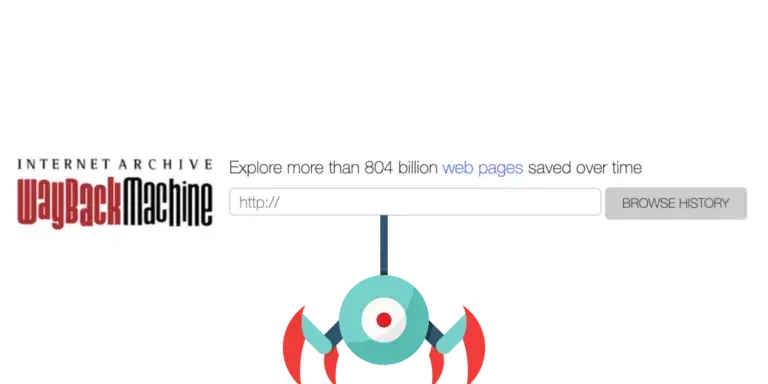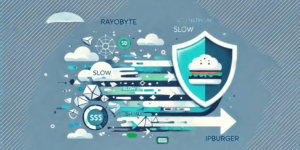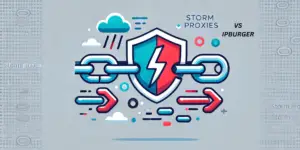Are you looking for ways to scrape data from Wayback Machine? Look no further!
In this blog, we’ll show you how to safely and effectively scrape data from the Wayback Machine so that you can get the most out of your data-gathering efforts.
So let’s learn how to safely scrape data from Wayback Machine!
What is the Wayback Machine?
The Internet Archive, a non-profit group that works to keep digital history safe, created and runs the Wayback Machine, an online archive of web pages. The Wayback Machine allows Internet users to view archived versions of web pages as they appeared in the past. It captures and stores snapshots of web pages over time, allowing users to “go back in time” and see what a web page looked like in the past.
Benefits of using the Wayback Machine
Access to information from the past: The Wayback Machine is a great way to look at old versions of websites. This can be beneficial when researching topics, as it lets you see how a website has changed over time.
Preserving content: The Wayback Machine can help preserve content unavailable on the web. This can be useful for legal purposes as well as for archival reasons.
Finding broken links: The Wayback Machine can be a great tool for finding broken links on a website. This can help keep your website up-to-date and improve the user experience.
Analyzing competitor websites: The Wayback Machine can analyze competitors and see how they have changed over time. This can help you stay up-to-date on what your competitors are doing and make sure you have the latest information.
Documenting changes: The Wayback Machine can document changes to a website. This can be useful for tracking changes over time and for legal purposes.
Crawling the Wayback Machine
Crawling the Wayback Machine is pretty straightforward. However, it certainty doesn’t hurt to have a checklist for tools you need and some guidelines to follow.
Necessary Tools
- Web scraping library (e.g., BeautifulSoup, Selenium)
- Wayback Machine API
- Wayback CDX Server
- Web browser
- Text editor (e.g., Notepad++)
- Code language (e.g. Python, Java, etc.)
- Command line interface (e.g. Bash, PowerShell)
Guidelines to Follow
- Make sure to read the Wayback Machine’s Terms of Service before you begin crawling.
- Be aware that crawling the Wayback Machine is time-consuming, and you should plan accordingly.
- Make sure to set up a crawler or scraping system to download the content from the Wayback Machine.
- Consider setting up a caching system to avoid downloading the same content multiple times.
- Set up a system to crawl the Wayback Machine in an orderly manner. This will help you get the most out of your time and resources.
- Consider setting up a system to filter out any content you don’t want to include in your crawl.
- Make sure to back up your data in case of any issues or errors.
- Be aware of any legal or copyright issues that might come up when using the Wayback Machine.
- Finally, remember to respect the privacy of the users who have contributed to the Wayback Machine.
Scrape Data from Wayback Machine
Now that we set the groundwork to scrape data from Wayback Machine let’s look at some techniques to get started.
Selecting the Right Resources
The best resources to scrape data from Wayback Machine are the Wayback Packager and the Internet Archive Wayback Machine API. The Wayback Packager is an open-source tool that allows users to easily download and save entire websites from the Wayback Machine. The Internet Archive Wayback Machine API provides programmatic access to the Wayback Machine and gives users more control over the data they scrape from Wayback Machine.
Techniques to Use
Web scraping: Using a web scraping tool such as BeautifulSoup, Selenium, or Scrapy, you can extract data from archived websites on the Wayback Machine.
Text Analysis: Using techniques like natural language processing or sentiment analysis, you can pull data from text documents saved by using text analysis.
Image Analysis: You can get information from archived images using optical character recognition or other image analysis methods.
Video Analysis: Using object detection or other video analysis methods, you can get information from videos that have already been saved.
Metadata Extraction: You can get information from archived web pages or other documents by using metadata extraction techniques.
Best Practices to Scrape Data from Wayback Machine
Gathering the Right Data
1. Before you scrape data from Wayback Machine, it’s important to identify the exact data you need and ensure that it is available on the Wayback Machine. Ensure that the data is accurate, relevant, and up-to-date.
2. Make sure that the data you want to scrape is available on the Wayback Machine and that it is up-to-date.
3. Research the Wayback Machine’s archive structure to determine the best way to access the data you need.
4. Use the Wayback Machine’s API or a web scraping tool to quickly and accurately gather data from the Wayback Machine.
5. When you scrape data from Wayback Machine, it’s important to be mindful of copyright laws. Make sure you don’t break any copyright laws when you get information from the Wayback Machine and use it.
6. Be aware of the Wayback Machine’s terms of service, and make sure that you comply with any copyright or other restrictions that may apply to the data you are scraping. Some data may be subject to copyright or other legal restrictions, and you should be aware of these before attempting to scrape data from Wayback Machine.

IPBurger Residential Proxies Helps Safely Scrape Data From Wayback Machine
IPBurger residential proxies are an ideal solution for scraping Wayback Machine safely. With IPBurger residential proxies, you can hide your real IP address and appear to be visiting from a different location. This helps to prevent detection and blocks by Wayback Machine, as it will think you are a legitimate user.
The proxies also provide excellent performance, with high speed and stability. They also have a wide range of features, such as rotating IPs and sticky sessions, which can help to keep your identity hidden. IPBurger offers 24/7 customer support, so you can quickly get help if you encounter any issues.
The Wayback Machine is a very useful tool for web scraping because it lets you look at old web pages. You can safely scrape data from the Wayback Machine by following the above steps. First, make sure that the data you are scraping is legal and not protected by copyright or other intellectual property laws. Then, find a website you want to look at and use the Wayback Machine to find a good snapshot of it. Next, use a scraping tool to extract the data you need. Finally, store the scraped data in a secure location and use it responsibly.
To learn more about web scraping, check out the following resources:
• Scraping websites with Python
• Web scraping with Python
• Scrapy



